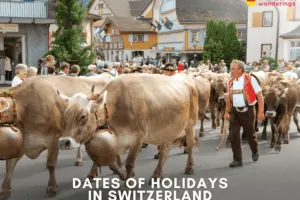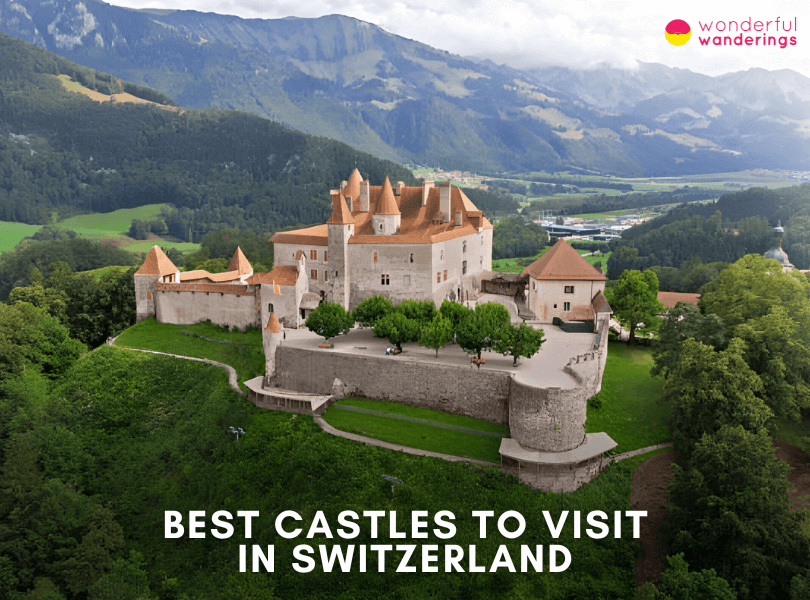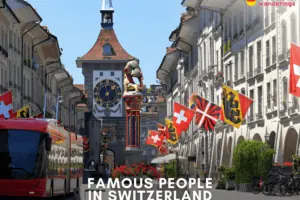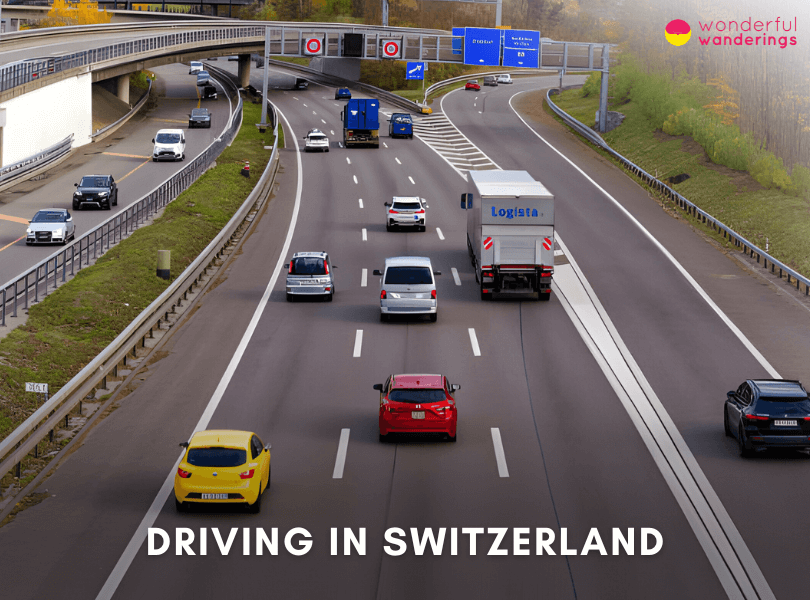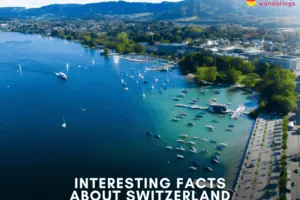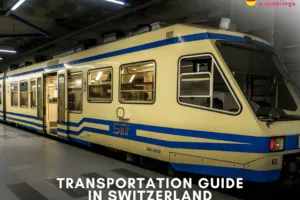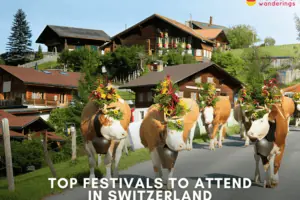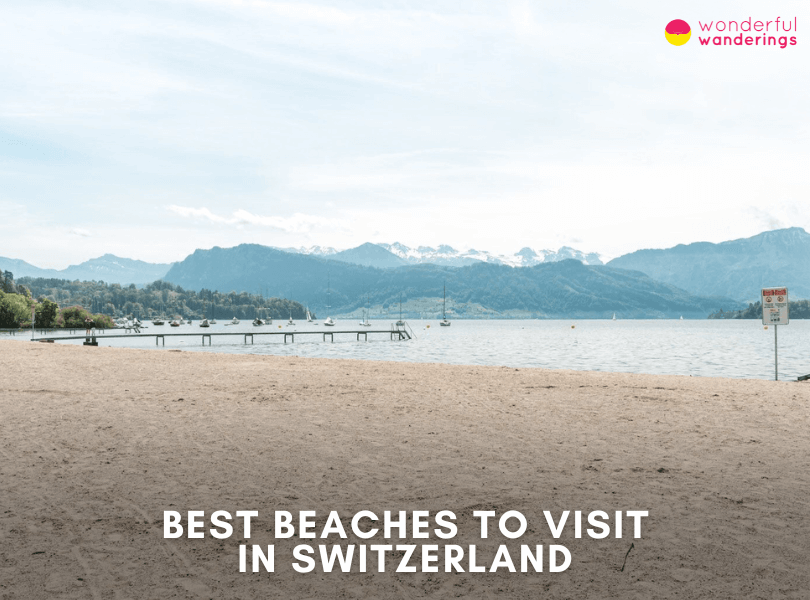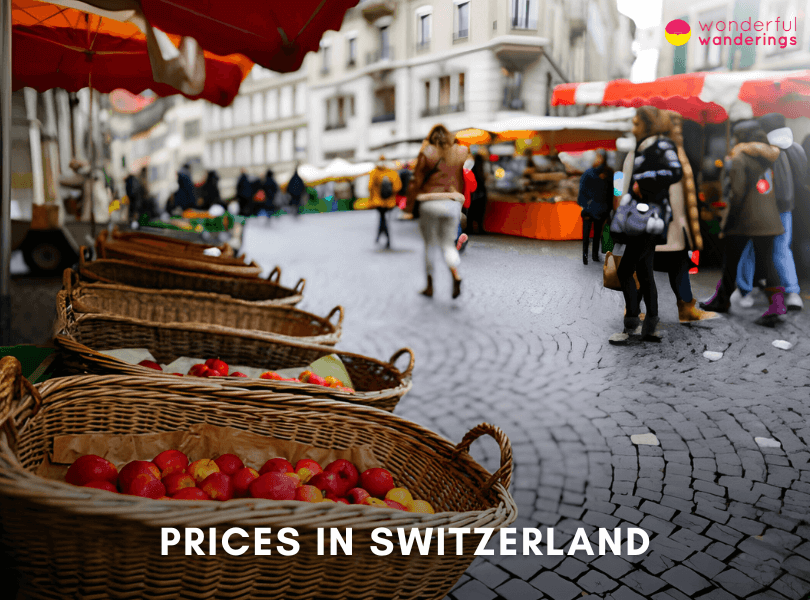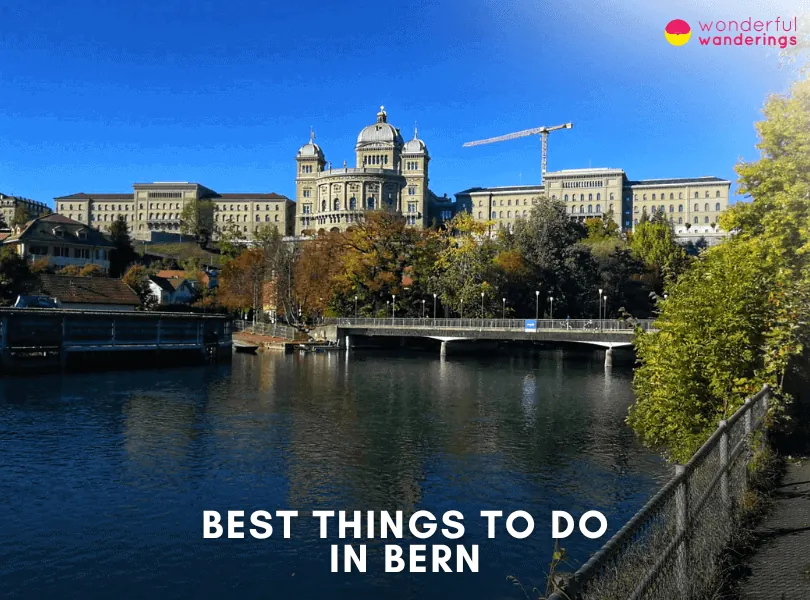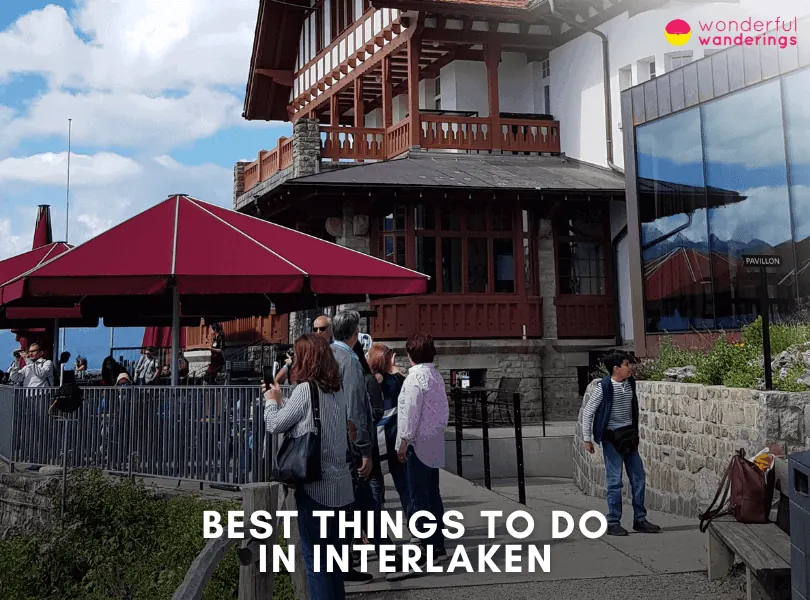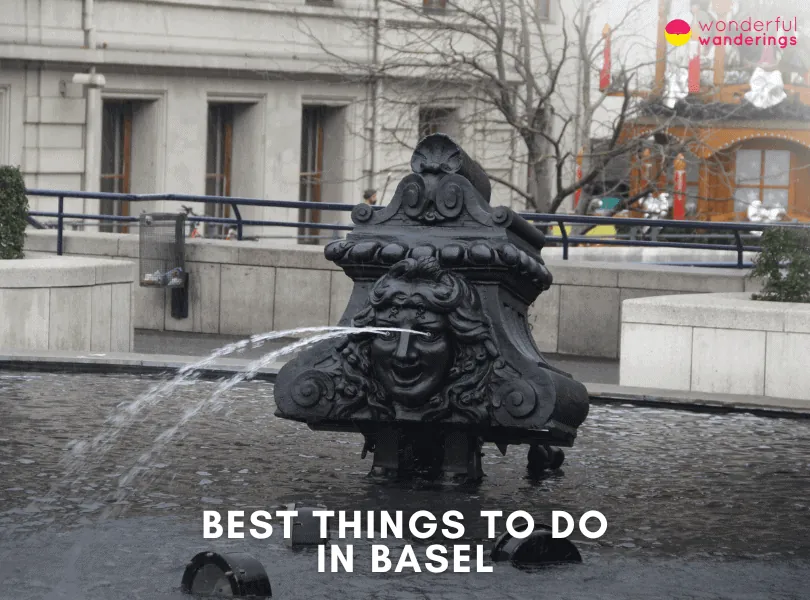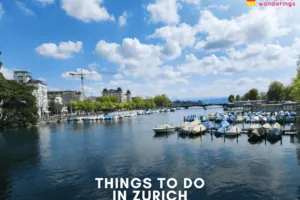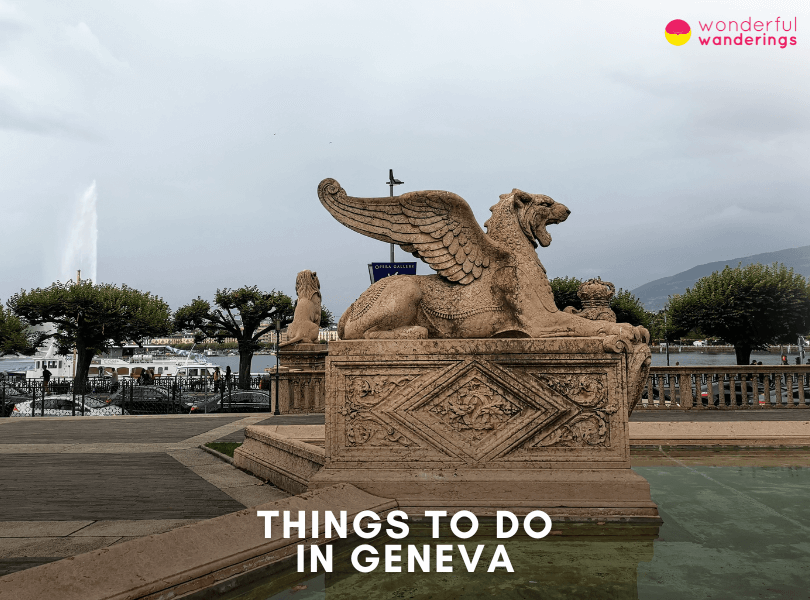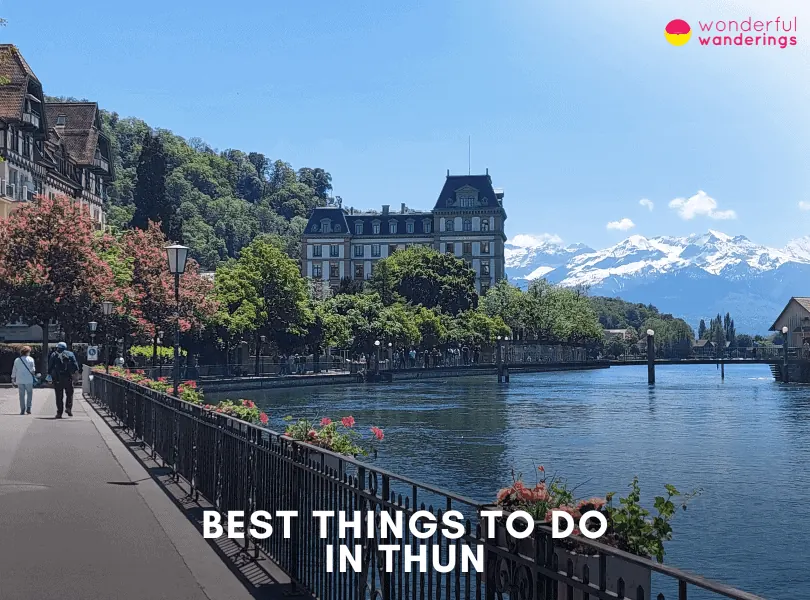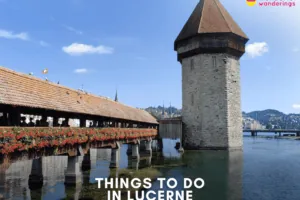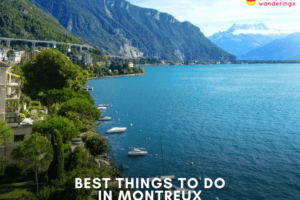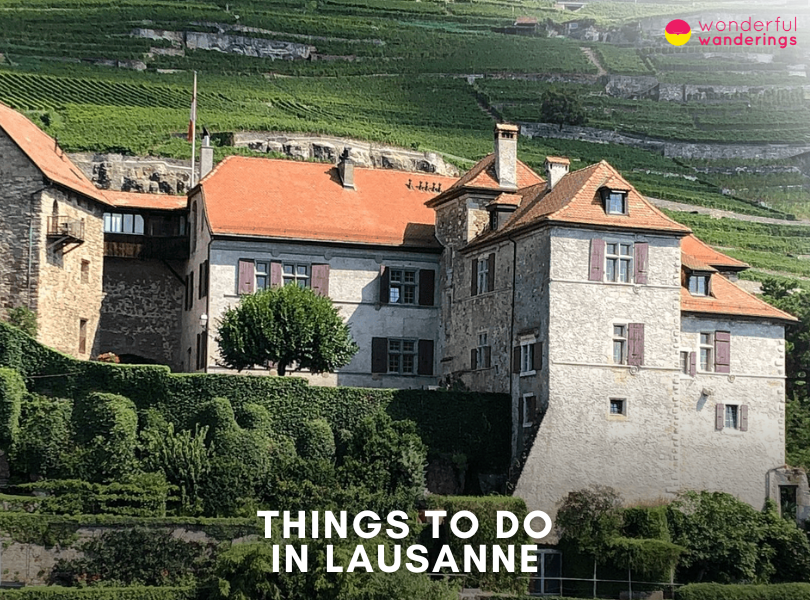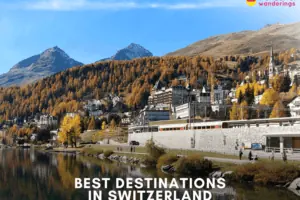Switzerland is a culturally diverse country with various holidays celebrated nationwide each year. Switzerland will observe fifteen public holidays in 2024, including New Year’s Day, Good Friday, Easter Monday, Ascension Day, Whit Monday, Swiss National Day, Christmas Day and Boxing Day. Holidays like Berchtold’s Day, Labor Day, Corpus Christi, All Saint’s Day and St. Martin’s Day are celebrated in certain cantons. The Swiss enjoy various school holidays, including a two-week Christmas break, a two-week Easter break, a six-week summer break and a one-week autumn break. National holidays reflect Switzerland’s Christian cultural heritage, while other observances highlight local traditions. Public holidays provide time for Swiss families to gather and engage in activities like city festivals, mountain trips, sports and relaxation. Diverse cantonal events and customs allow visitors and residents to experience Switzerland’s rich culture through holidays in 2024. Read Post
16 Best Castles to Visit in Switzerland
Switzerland is home to numerous historic castles that attract visitors interested in the country’s medieval history and architecture. The castles are spread across different cities and regions, often located in strategic positions on lakesides or hilltops. The castles were built from the 10th century onwards, serving as fortresses, administration centers and noble family residences. Some of the most notable castles in Switzerland include the 13th-century Gruyères Castle, which was home to the Counts of Gruyères, Chillon Castle on Lake Geneva, originating from the 11th century when it was occupied by Savoy rulers, Spiez Castle, which is a medieval fortress on a hilltop above Lake Thun dating back to the 10th century, the 12th-century hilltop Lenzburg Castle overlooking the Aare River valley and Grandson Castle on Lake Neuchâtel built in the 11th century known for its eventful history of battles and sieges. These castles allow visitors to explore Switzerland’s rich medieval past through their settings, historic architecture and informative museums. Read Post
Renting a Car in Switzerland: 34 Important Tips (2024)
Driving in Switzerland, safety tips include being prepared for frequent tunnels, narrow mountain roads with steep unprotected drops and hazardous weather conditions like snow or fog that can emerge suddenly. Drivers must adjust speeds, utilize headlights in tunnels and have snow chains in winter. OtherRead Post
30 Most Famous Swiss People: Artists, Chefs and Scientists!
Switzerland has produced several notable figures across different fields. Switzerland’s famous sons and daughters have contributed to world culture and knowledge, from pioneering scientists like Albert Einstein to legendary artists like Alberto Giacometti. This diverse group of famous Swiss represents some of the country’s most significant achievements. These famous Swiss artists, chefs, scientists and other luminaries provide an overview of Switzerland’s impact beyond its borders. These iconic Swiss have left indelible marks in their chosen disciplines, whether changing how people understand the universe through physics, redefining sculpture and painting through new aesthetics or revolutionizing cuisine. Their stories represent the Alpine nation’s rich intellectual, cultural and innovative traditions. Read Post
17 Traditional Swiss Foods and Where to Eat Them in Bern
Swiss cuisine is diverse and rich, shaped by the country’s French, German and Italian influences. Several signature dishes represent Switzerland’s culinary heritage. Visitors can experience authentic Swiss specialties in Bern, like cheese fondue, melted cheese dish with bread for dipping and raclette, melted cheese served with potatoes and pickles. Other Swiss specialties found in Switzerland include rösti (hashbrown potato pancakes), landjäger (dried sausage), bircher muesli (oat and fruit cereal) and rich chocolate creations. The Swiss locale of Bern on the shores of Lake Bern provides the perfect backdrop to savor Swiss delicacies like papet vaudois, a potato and leek dish, älplermagronen, a hearty alpine macaroni with cheese and potatoes and zuger kirschtorte, a cherry-kirsch cake. Sampling these traditional foods offers insight into Switzerland’s diverse culinary heritage. Read Post
Driving in Switzerland: Road Safety, Driving Etiquette and How to Rent a Car
Driving in Switzerland requires full attentiveness to frequently changing speed limits, winding mountain roads and winter driving hazards. Obey all posted limits, as enforcement is strict via cameras and police checks and missing one sign is not an excuse for speeding. On narrow two-lane roads,Read Post
21 Interesting Facts About Switzerland
Switzerland is a multilingual country with four national languages – German, French, Italian and Romansh. The Alpine mountains cover 65% of Switzerland’s landscape, influencing its culture and economy. Switzerland is completely landlocked within central Europe. It is popular globally for excellence in cheese, chocolate, watchmakingRead Post
Transportation Guide in Switzerland: Which One Is Best for You
Switzerland is a small, landlocked country in central Europe, bordered by Germany, France, Italy, Austria and Liechtenstein. It has a diverse geography, including the Alps, the central plateau and the Jura hills. Switzerland has an extensive transportation network for traveling to and within the country.Read Post
14 Top Festivals to Attend in Switzerland for 2024
Switzerland hosts various popular festivals that attract locals and visitors. The lively Street Parade techno festival held annually in Zurich features stages and parades along Lake Zurich, drawing over 1 million attendees. The Montreux Jazz Festival along Lake Geneva offers free stages and lakefront performances, showcasing jazz legends like Ella Fitzgerald and Aretha Franklin. The Paleo Festival in Nyon is one of the biggest open-air festivals in Switzerland, across multiple stages and attracting headliners such as Muse and the Red Hot Chili Peppers. The Gurten Music Festival near Bern combines the city’s mountain views and 60 DJs playing various genres. The Festival International de Ballons hot air balloon celebration has occurred for over 40 years in Château-d’Oex, featuring colorful balloon shows and flights amidst the scenic Swiss Alps. These festivals represent Switzerland’s diverse festivals and cultural offerings in unique settings nationwide. Read Post
10 Best Lake Beaches to Visit in Switzerland
Switzerland is a landlocked country surrounded by other nations but features beautiful beaches along the shores of its scenic lakes. Switzerland has no coastline, yet visitors can enjoy the swimming, sunbathing and relaxing beaches offered during summer. Many of the beaches in Switzerland feature amenities like restaurants, changing facilities, lifeguards and equipment rentals. The beaches offer views of the surrounding mountains and lakes. Some of the most popular beaches in Switzerland include Bains des Paquis in Geneva, which is located on the shore of Lake Geneva and is known for its relaxing saunas and proximity to the city center. Visitors can enjoy Tiefenbrunnen Beach, which has a diving board and calm waters nestled against the backdrop of the Swiss Alps. Lido di Lugano provides amenities like restaurants, pools and sports facilities for an active beach day. Baby Plage in Geneva offers shallow swimming areas and playgrounds perfect for families. The sandy Lido beach on Lake Maggiore has beach parties and lively social events throughout the summer. These beaches showcase the diversity of beach experiences available across Switzerland. Read Post
Prices in Switzerland: Is Switzerland Expensive?
Switzerland is considered an expensive country to live in and travel to due to the country’s high standard of living, strong Swiss money, high wages that residents earn and reliance on imports. Key things travelers should consider when going around Switzerland are the weather, healthRead Post
18 Best things to do in Bern: Museums, History and Travel Guide
Bern, often referred to as the “federal city”, is the de facto capital of Switzerland, located slightly west of the center of the country and north of the Bernese Alps. The city’s coordinates are 46.9480° N, 7.4474° E. The city is part of the Bern-Mittelland administrative district and is governed by a city council (Gemeinderat) with five members and a mayor (Stadtpräsident). Bern is surrounded by the Aare, a major river of the Swiss Plateau and is known for its historic old town (Altstadt) in the center, which became a UNESCO World Heritage Site in 1983. The city is on the Swiss plateau in the canton of Bern, the second most populous of Switzerland’s cantons. Bern is the fifth-most populous city in Switzerland, behind Zurich, Geneva, Basel and Lausanne. As of the latest census, Bern had an estimated population of 133,883.
The city of Bern has a rich history dating back more than 800 years. It was founded by the Dukes of Zähringen in 1191 and joined the Swiss Confederation in 1353. In 1848, Bern was chosen as the capital city of the Confederation. Over the centuries, Bern has evolved into a modern service center, hosting the headquarters of international organizations and companies. Bern is a political center and cultural and educational hub. The city offers a rich and varied range of cultural activities, including theater performances, art exhibitions and concerts. It is known internationally as a center of science and research, particularly in the fields of cutting-edge technology, climate and medicine. Bern is a sporting city, home to top clubs like Young Boys Bern and SC Bern and has hosted international sporting events such as the EURO 2008 football European Championship and the ice hockey world championships. Read Post
17 Best things to do in Interlaken: Museums, History and Travel Guide
Interlaken is a small town and popular tourist destination in central Switzerland situated between Lake Brienz to the east and Lake Thun to the west. The coordinates of Interlaken are 46.6863° N, 7.8632° E. The name Interlaken translates to “between lakes” in German, an apt description of its exceptionally scenic setting in the heart of the Swiss Alps. The town sits on a flat alluvial plain known as Bödeli. Interlaken offers postcard views of the famous Alpine peaks Jungfrau, Mönch and Eiger in the distance to the south. Interlaken has played a significant role in Switzerland’s booming tourism industry over the past century and a half. As of the latest census, Interlaken had an estimated population of 5,924.
Interlaken has a long history rooted in its scenic location between Lake Brienz and Lake Thun in central Switzerland. The first known settlements in the area date back over 5,000 years to the Neolithic era. Interlaken, as it is known today, traces its origin to 1133 when the Augustinian monastery of Interlaken was founded in the area. The monastery brought commerce and authority to the rural valley community that had developed around it. It became the center of local government for the surrounding region. Interlaken gained official market rights in 1365 from the Lord of Unspunnen, which boosted trade, with significant growth followed over the next few centuries. Interlaken was an affluent community by the early 1500s due to revenue from bridge tolls, transportation of goods and its monastery. A fire in 1528 led to the monastery falling into disrepair and abandoned by the end of the century. Its buildings were converted into administrative offices and eventually demolished in the early 1800s. Interlaken reverted to a quiet rural town for several centuries, with the monastery’s significance diminished. Its tourism potential started gaining recognition in the 1700s from European visitors attracted to the area’s natural alpine scenery. It was not until the late 1800s and early 1900s that Interlaken emerged as a popular tourist destination when the opening of railways provided access to the mountain landscape. The local population grew more than five-fold over the late 19th and early 20th centuries. Hotels sprung up to accommodate wealthy Victorian travelers arriving by train to enjoy Interlaken’s clean air, incredible views and mountain adventures. Read Post
19 Best things to do in Basel: Museums, History and Travel Guide
Basel is a city in northwestern Switzerland, the capital of the region. It is near the convergence of the Swiss, French and German borders, with suburbs extending into France and Germany. Its geographical coordinates are 47.5596° N, 7.5886° E. It is the largest city in the half-canton of Basel-Stadt, which is virtually coextensive with the city itself. The city lies along the Rhine River, at the mouth of the Birs and Wiese rivers, marking the entrance to the Swiss Rhineland. Basel has a population of 173,422 as of the latest census.
The history of Basel dates back to the middle Paleolithic period, with the first traces of a settlement found around 130,000 years ago. The Celts fortified the area in the first century BC and the Romans later founded the Colonia Raurica at the same location. Basel was admitted into the Swiss Confederation in 1501 and became a center of humanism and the Protestant Reformation in Switzerland. The city’s growth was further propelled by the silk-weaving and dyeing industries, which gave rise to today’s pharmaceutical and chemical companies. Basel has gained a reputation as a leading architectural metropolis, with its multi-functional stadium “St. Jakob-Park” winning the Pritzker Prize, the most prestigious award for architects, in 2001. Today, Basel is a financial and commercial hub and a celebrated city of culture. Read Post
Switzerland Holidays Guide
Planning a trip to Switzerland? This Switzerland Holidays Guide will help you with information on what to do in Switzerland, how to get there, what practical things to take into account, what to eat while you’re there, what to pack and much much more. FindRead Post
18 Things to do in Zurich: Museums, History and Travel Guide
Zurich is the largest city in Switzerland and a global center for banking and finance. It is in north-central Switzerland at the northwestern tip of Lake Zurich, between hills to the west and east. Zurich stretches along both sides of the Limmat River, which flows north from Lake Zurich before turning west. The city’s geographic and historic center is a small hill called Lindenhof. Zurich constitutes Switzerland’s primary metropolis, with a total population of 356,467 as of 2023.
There is evidence of a Zurich settlement dating back over 6,400 years when a permanent town was established in the Roman era. The Romans founded it as Turicum, a tax collection point on the Limmat, forming the border between two Roman provinces. Zurich gained independence in 1218 and joined the Swiss Confederacy in 1351. It adopted the Protestant Reformation in 1519 under the leadership of Ulrich Zwingli and later emerged as a leading financial and industrial center in the mid-19th century. The city grew rapidly, absorbing neighboring districts. Read Post
16 Best things to do in Gruyères: Museums, History and Travel Guide
Gruyères is a town in the pre-Alpine foothills of the canton of Fribourg in Switzerland. It is recognized for its medieval architecture, including the iconic Gruyères Castle and for giving its name to the famous Gruyère cheese. The town is situated at an elevation of 810 meters (2,660 feet) above sea level and coordinates 46.5778° N, 7.0625° E. It is part of the district of Gruyère, an important tourist location in the upper valley of the Saane/Sarine River. As of the latest census, Gruyères has an estimated population of 2,282. Read Post
18 Things to do in Geneva: Museums, History and Travel Guide
Geneva is located in western Switzerland at the southern tip of Lake Geneva. It sits on the Rhone River north of the Swiss Alps and the Jura Mountains. Geneva is surrounded by France on three sides, with the Rhone forming the border between Switzerland and France as it flows out of the lake. Geneva’s location on the lake and along major Alpine transportation routes has been an important center of trade, finance and diplomacy for centuries. The city has a population of 191,877 as of 2023.
Geneva’s recorded history stretches back over 2,000 years to when it was a border town of the Roman Empire. It later became the seat of a bishopric in the 4th century AD. Control of the city changed hands several times between Burgundy and the Holy Roman Empire over the following centuries. By the 16th century, Geneva had developed into an independent, predominantly Protestant republic. Geneva was considered the “Protestant Rome” after religious reformer John Calvin made it the center of his reform movement. Read Post
17 Best things to do in Thun: Museums, History and Travel Guide
Thun is a town and municipality situated in the administrative district of Thun in the canton of Bern, Switzerland. It is where the Aare River flows out of Lake Thun, 30 kilometers (18.64 miles) southeast of Bern. The geographical coordinates of Thun are 46.7580° N, 7.6280° E. The town is surrounded by various municipalities, including Amsoldingen, Heiligenschwendi, Heimberg, Hilterfingen, Homberg, Schwendibach, Spiez, Steffisburg, Thierachern, Uetendorf and Zwieselberg. Thun is the capital of the Thun District in the canton of Bern. The town covers a total area of 21.60 square kilometers (8.34 square miles). As of the latest census, the population of Thun is 43,665. The population is diverse, with Swiss citizens and residents from Germany, France, Italy, Portugal and other European and non-European countries. Read Post
17 Things to do in Lucerne: Museums, History and Travel Guide
Lucerne is in central Switzerland at the outfall of the Reuss River into Lake Lucerne. The city occupies both river banks and the lake’s lowest reach, with the city center straddling the river downstream. Lucerne is surrounded by mountains, with Mount Pilatus to the southwest and the Bernese Alps to the southeast across the lake. The city has a population of 85,197 as of 2023, making it the most populous city in the canton of Lucerne.
Lucerne grew out of a Benedictine monastery founded in the 8th century and became an important trade center after the opening of the Gotthard Pass in the 13th century. Lucerne joined an alliance with Uri, Schwyz and Unterwalden in 1332 to gain independence from the Habsburgs, later leading the Catholic cantons after the Reformation. Lucerne expanded its territory in the 15th century but lost political power after being defeated by Protestant forces in the Second War of Villmergen in 1712. Napoleon occupied it in 1798 before regaining its status as the capital of its canton. Lucerne thrived and now is a popular tourist destination known for its well-preserved medieval architecture. Read Post
20 Best things to do in Montreux: Museums, History and Travel Guide
Montreux is a town located on the shoreline of Lake Geneva at the foot of the Alps. The geographical coordinates of Montreux are 46.4312° N, 6.9107° E. It belongs to the district of Riviera-Pays-d’Enhaut in the canton of Vaud in Switzerland. The town is part of a region known as the Riviera, which has been a significant tourist destination since the 19th century due to its mild climate and scenic beauty. The name Montreux translates to “rocky promontory” in Latin, a fitting description for its location at the foot of the Alps. The town is between the lake and mountains, offering breathtaking views of the surrounding landscape. The highest point in Montreux is Naye, with an elevation of 2,021 meters (6,631 feet), while the lowest point is Lake Geneva, at an elevation of 374 meters (1,227 feet). Montreux, As of the latest census, Montreux had an estimated population of 26,225. Read Post
16 Best Things to Do in Lausanne: Museums, History and Travel Guide
Lausanne, with a history of over 2,000 years, began as a Roman settlement named Lousonna in the 1st-century BC. The Lausanne Cathedral, a Gothic architectural marvel, was constructed during this time. In 1536, Bern conquered Lausanne, introducing Protestantism. French control followed in 1798 and Lausanne became the Vaud canton capital in 1803. The 19th-century saw Lausanne emerge as an intellectual and artistic hub, attracting notable figures like Voltaire and Dickens. In Lausanne, French is the predominant language, reflecting its location in Romandie, the French-speaking region of Switzerland. The city operates on Central European Time (CET), which is UTC/GMT +1 hour. Lausanne’s population in 2023 stands at approximately 145,080, with a balanced gender distribution and a median age of 43 years. Lausanne’s unique features include its role as a language hub, with French being widely spoken and its use of the Swiss franc (CHF) as the official currency. To fully experience Lausanne, 1-2 days are recommended. The city is generally safe for tourists, though standard travel precautions are advised. It’s considered safer compared to many other cities worldwide. Read Post
17 Best Destinations to visit in Switzerland all year round!
Visiting Switzerland offers a top destination for travelers. The best time to visit largely depends on personal interests and the activities plan to indulge in. The country’s public transportation system, known for its efficiency and punctuality, includes an extensive network of trains, buses and boats, making it convenient to explore different regions. The Swiss Franc (CHF) is the official currency and while credit cards are widely accepted, carrying some cash is advisable, especially in remote areas. Switzerland’s diverse cultural tapestry is reflected in its four official languages – German, French, Italian and Romansh – though English is commonly spoken in tourist areas. Safety and healthcare standards are high, ensuring a secure environment for visitors.
Zurich, Switzerland’s largest city and a global banking and finance hub, offers a mix of historic charm and modern sophistication. Geneva, the second-largest Swiss city and an international hub. Lucerne, known for its lakeside setting and historic landmarks, is best explored in the summer for outdoor festivals and activities. Thun, a gateway to the Bernese Oberland. Basel, a cultural hotspot with a rich history and numerous museums, offers pleasant weather from April to October. Interlaken, famous for adventure sports and breathtaking Alpine scenery. Bern, Switzerland’s capital, boasts a UNESCO-listed Old Town and is best visited from April to October for mild weather. Read Post

